Greywater-harvesting case study
Lancaster residence, 4 people, 2 goats, 6 chickens.
Tucson, Arizona, USA.
Latitude 32.2˚N.
Elevation 2,555 feet (779 meters)
Average annual precipitation 11 inches (290 mm)…
• 1/8-acre property.
• See here for a One-Page Place Assessment of Tucson, Arizona
30 to 50% of the drinking water consumed by the average US single-family household is used to irrigate plants. That’s crazy! Think about all the resources consumed to treat our water to drinking water standards, then all the resources needed to install, maintain, and power a water distribution network that can export/deliver that drinking-/potable-quality water to every home and business. And then 30 to 50% of that drinking water is directed straight into the dirt to irrigate the household’s landscape and garden!
We don’t want to use/waste costly, imported drinking water for non-potable uses.
Instead, we want to harvest (NOT drain or throw away) and beneficially cycle and reinvest free on-site waters—especially for non-potable uses such as irrigation.
So, we set up all plantings within or beside water-harvesting earthworks so:
Free rainwater is the primary irrigation source
Free greywater is the secondary irrigation source
Municipal/well/drinking water is a supplementary source only used in true times of need.
A key strategy to making this work is we plant the rain before we plant any plant (multi-use native plants are the easiest to succeed with), then we also plant greywater before/where we plant any higher-water-use plant such as a non-native fruit tree.
See the plant appendix of Rainwater Harvesting for Drylands and Beyond, Volume 1, 3rd Edition for how to estimate the water needs of your plants, and see Volume 1 or 2 to estimate the volume of rainwater, greywater, and other free waters you have on site that could irrigate those plants.
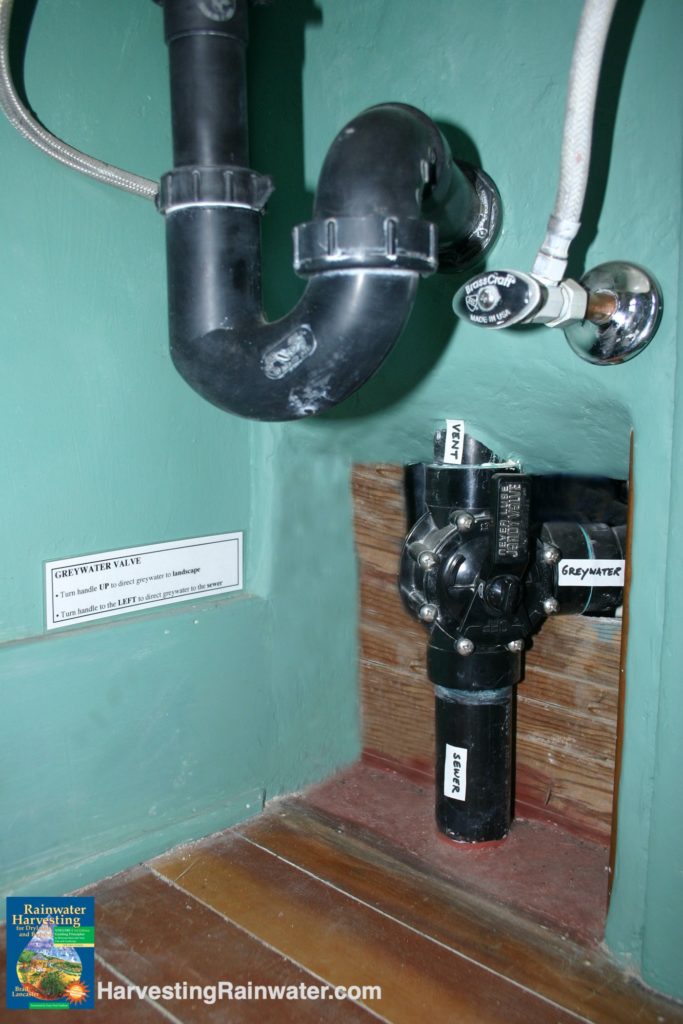
Here we installed a three-way diverter valve under sink to give us the convenient option of sending greywater to landscape or sewer depending on what goes down the drain.
When we use greywater-/vegetation-compatible soaps, all goes to the landscape; but if something toxic such as chlorinated bleach were used, all could be directed to the sewer.
Reproduced from Rainwater Harvesting for Drylands and Beyond, Volume 1, 3rd Edition.
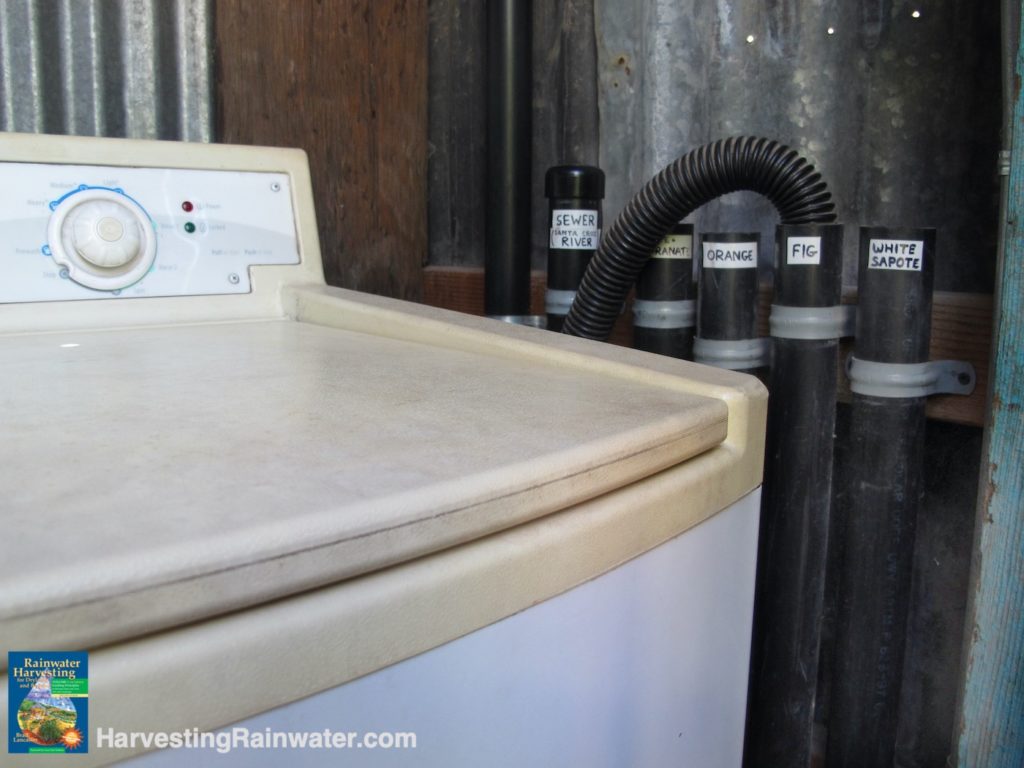
Note: include an additional marked drainpipe going to the sewer (capped when not in use) as an option for households that occasionally use non-biocompatible detergents or that have seasonally saturated or frozen soils.
Reproduced from Rainwater Harvesting for Drylands and Beyond, Volume 1, 3rd Edition.
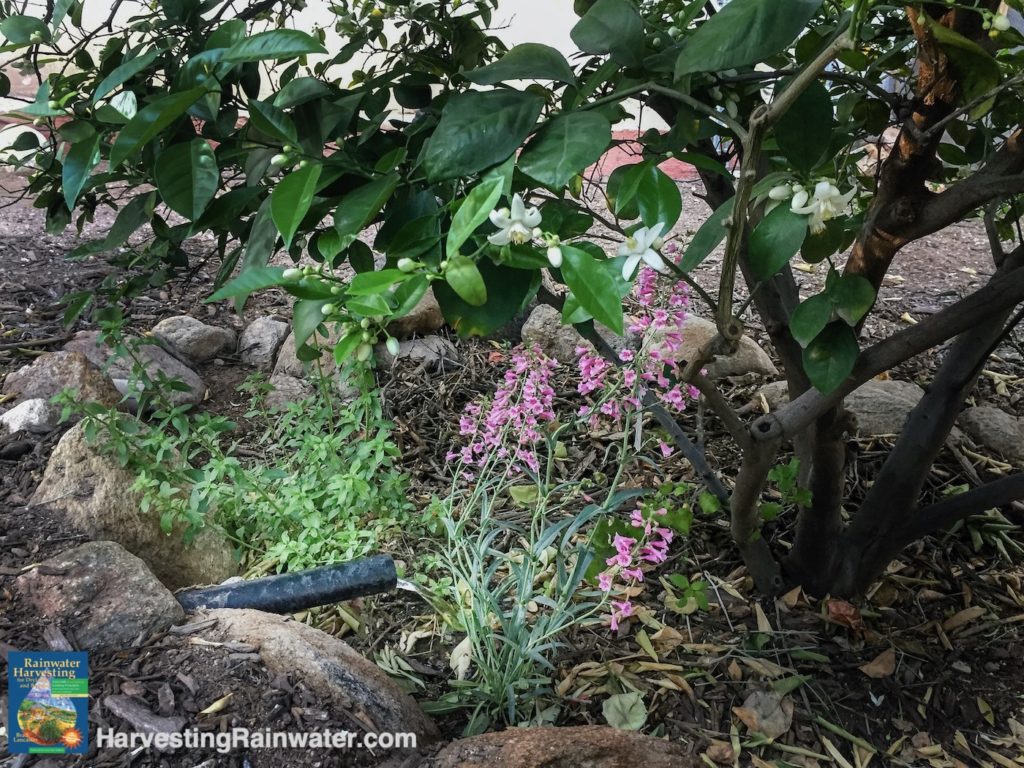
Reproduced from Rainwater Harvesting for Drylands and Beyond, Volume 1, 3rd Edition.
All pipe distributing greywater maintains a minimum 2% downward slope to ensure free, effective gravity-fed distribution of the greywater.
See chapter 12 and Tool Box Level in appendix 1 of Rainwater Harvesting for Drylands and Beyond, Volume 2, 2nd Edition for more.
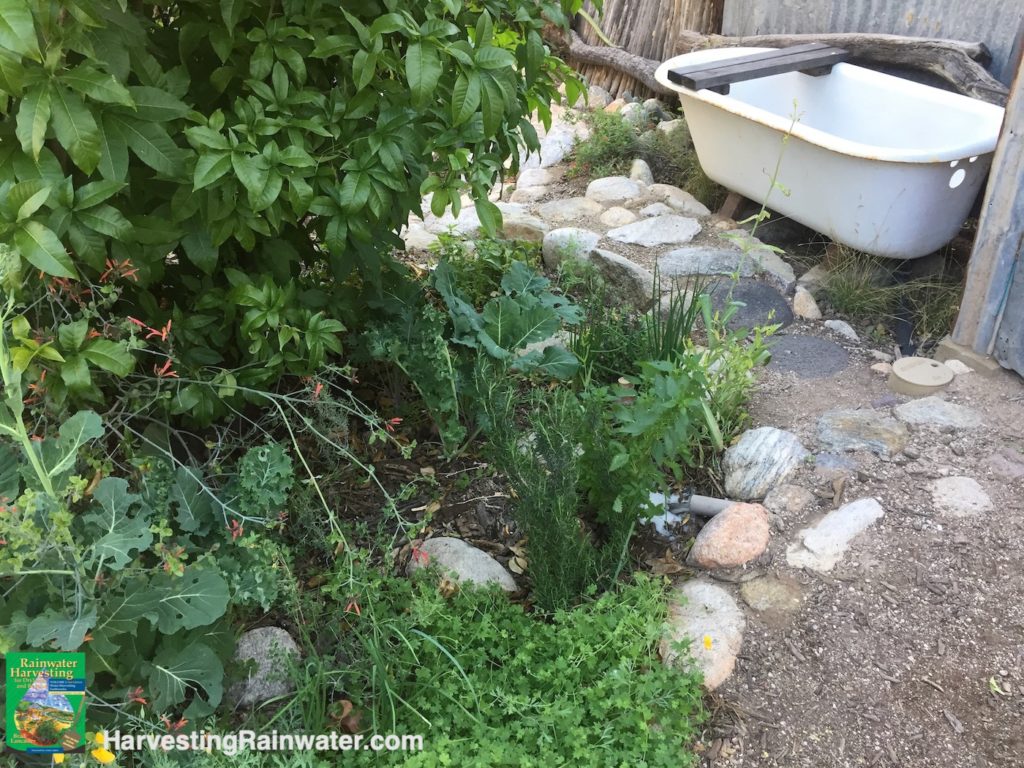
The beige pipe in the lower right of the photo delivers greywater from a washing machine. Another pipe (hidden by vegetation) delivers greywater from an outdoor bathtub/shower. In less than 10 minutes, all the greywater infiltrates into the living soil and roots. Plants utilize this greywater all year long.
The white sapote tree to the left is the primary perennial plant in the mulched basin. Smaller annuals and perennials are planted closer to the greywater outlets where their smaller root systems can utilize the water. The edible parts of all these plants are either cooked before eating, or are high enough above the ground so harvested parts do not come in direct contact with greywater. This safe and effective system has served me well for over 20 years.
If you look closely, you’ll see the tops of buried unglazed ceramic irrigation ollas capped with a cork. These are periodically filled with rainwater via a hose from the cistern. (See Planting Water in Pots in the Real-Life Examples section of chapter 2 for more).
The average municipal/drinking water consumption per person per day in Tucson is 82 gallons, but thanks to our water-harvesting strategies our municipal/drinking water consumption is less than 20 gallons per person per day. And we have a verdant and productive landscape that, depending on the season can produce 10 to 25% of our households’ food needs.
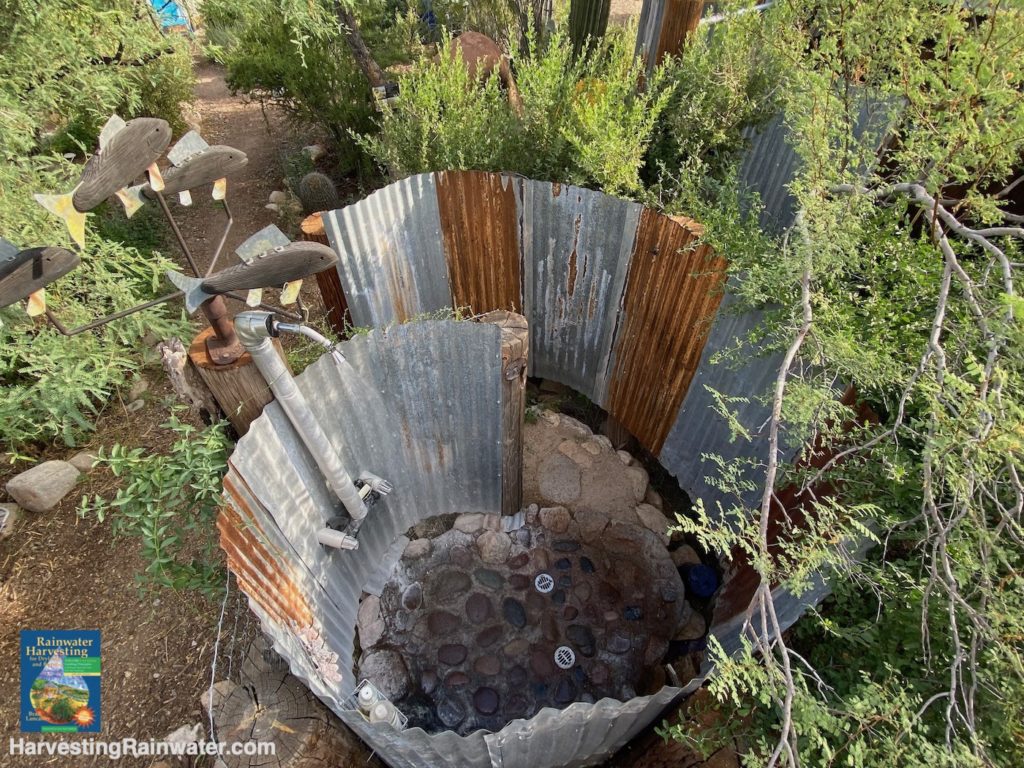
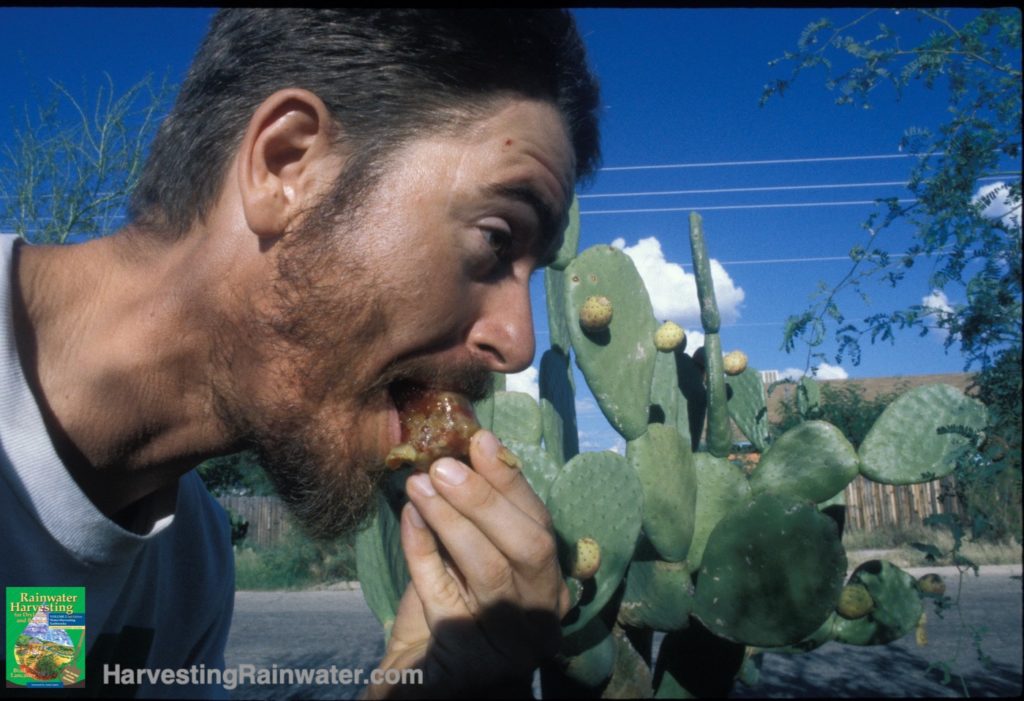
Additionally, we are far more connected with where our water comes from, how much we use, how we use it, and how we can recycle it in myriad ways to improve the waters’ quality, help rehydrate our local watershed. These systems have also made us far more resilient in extreme weather by reducing the effects of drought in dry times and mitigating potential flooding in wet times.
For more information
on harvesting greywater and other free, on-site water sources see the following books available at deep discount direct from the author:
See the new, full-color, revised editions of Brad’s award-winning books
– available a deep discount, direct from Brad:

Volume 1
THE book to enable you to assess all your free on-site waters, then create an integrated water harvesting plan.
Includes the story of the transformation of the Lancaster residence.

Volume 2
Lots of step-by-step instructions on how to design, build, and plant many different kinds of rain and greywater gardens for many different contexts.
A whole chapter on greywater harvesting.
Case studies of how to change code to allow for safe, effective, and affordable greywater harvesting systems where you live.
An appendix on dark greywater harvesting.
